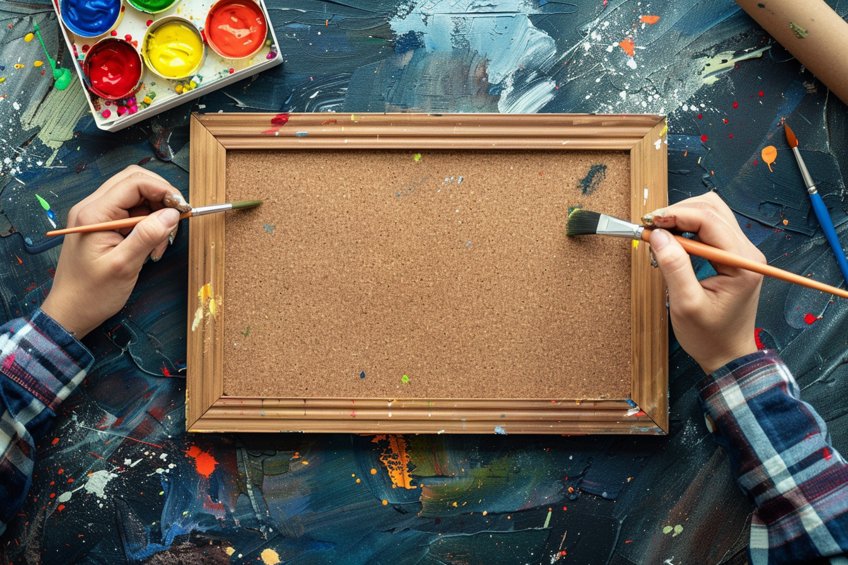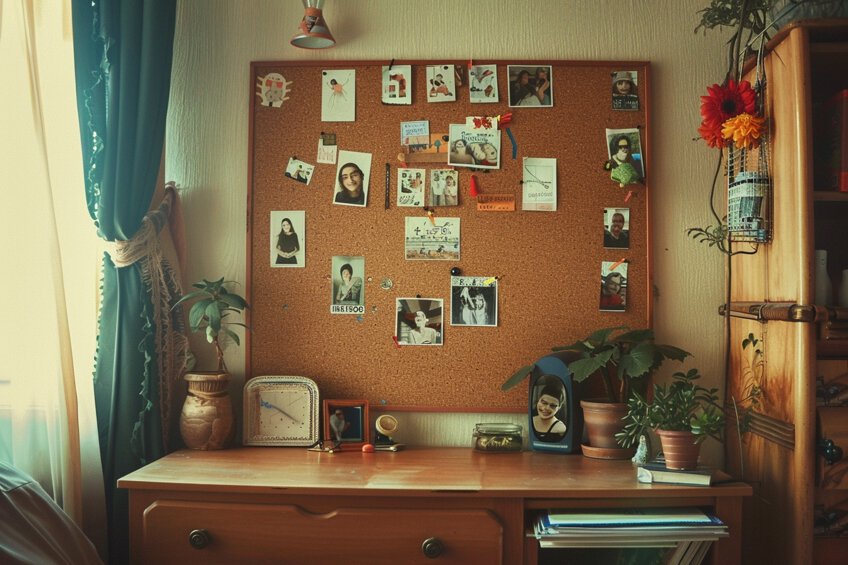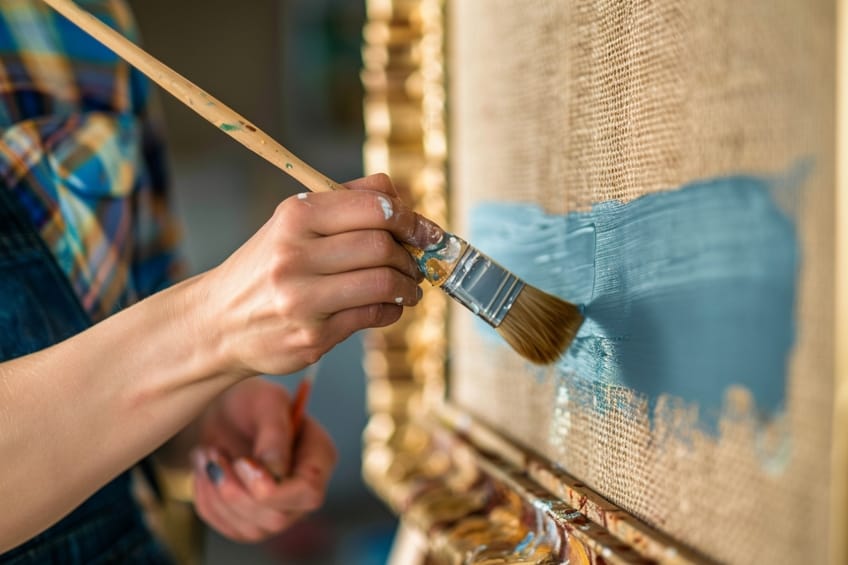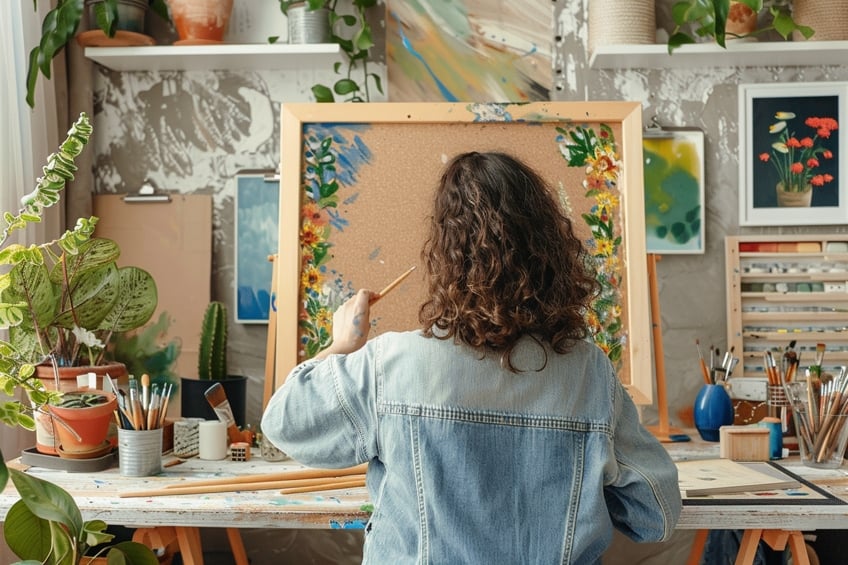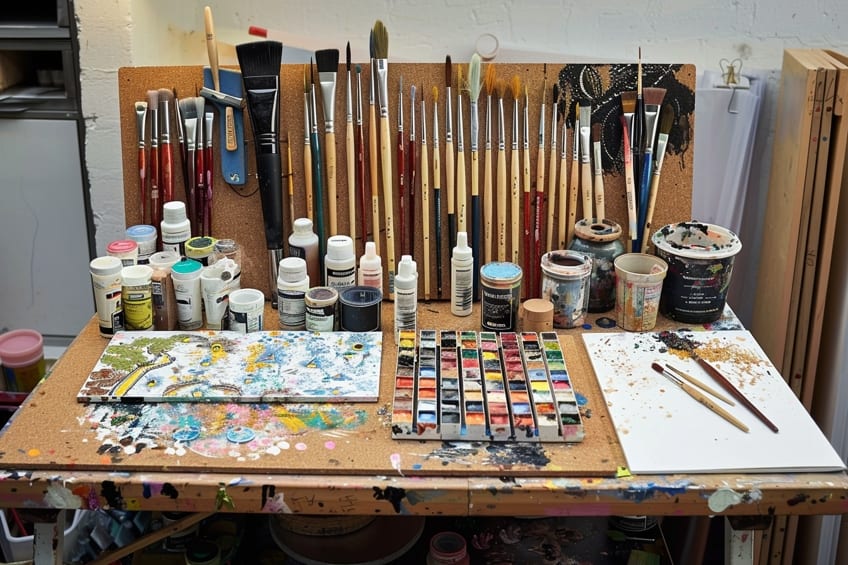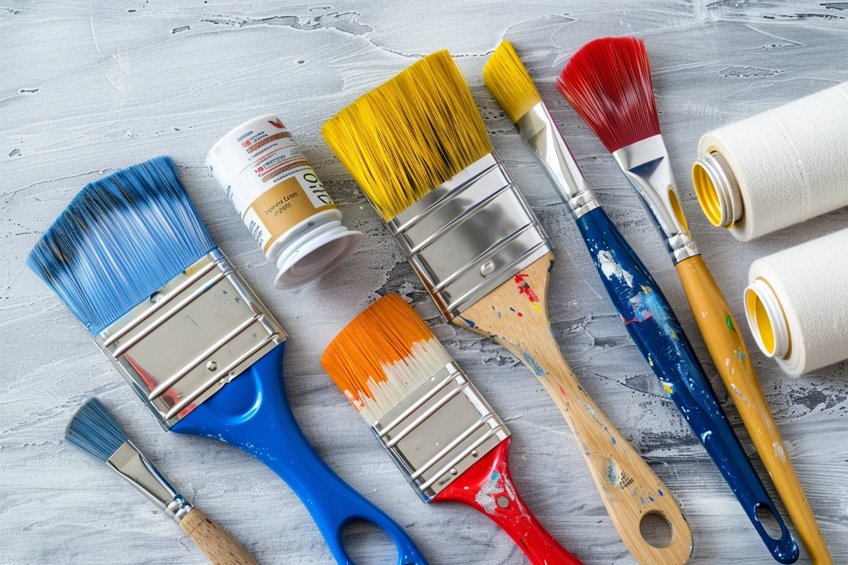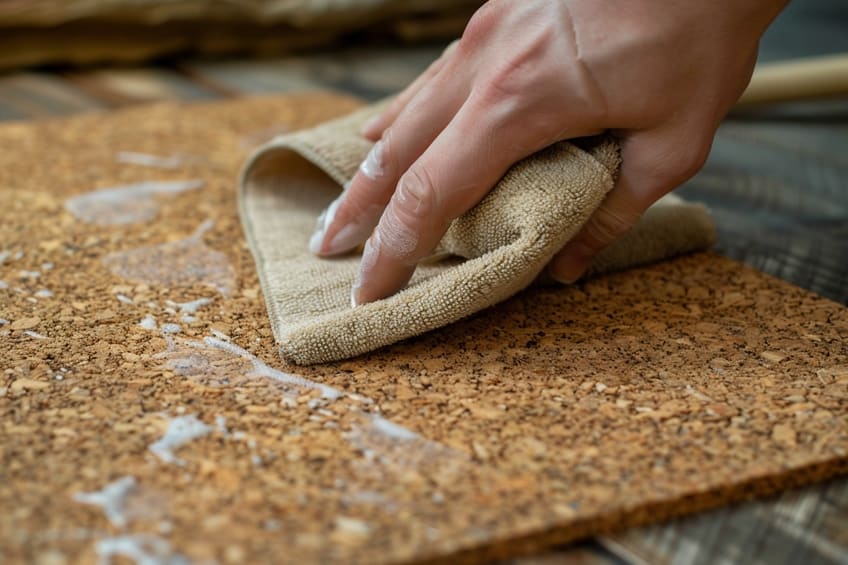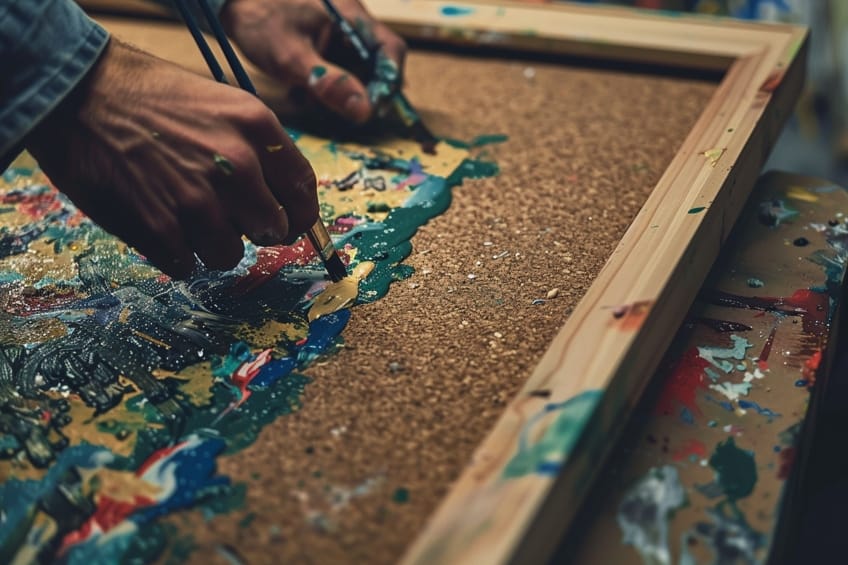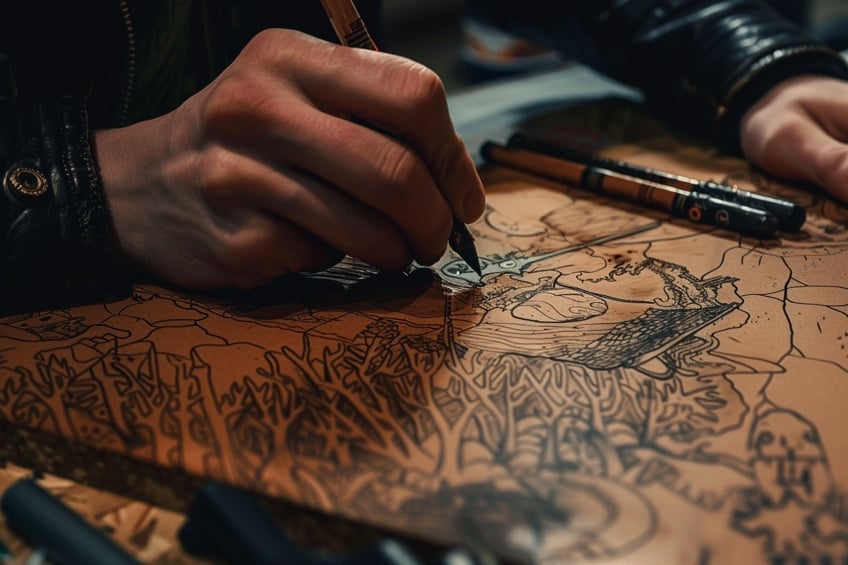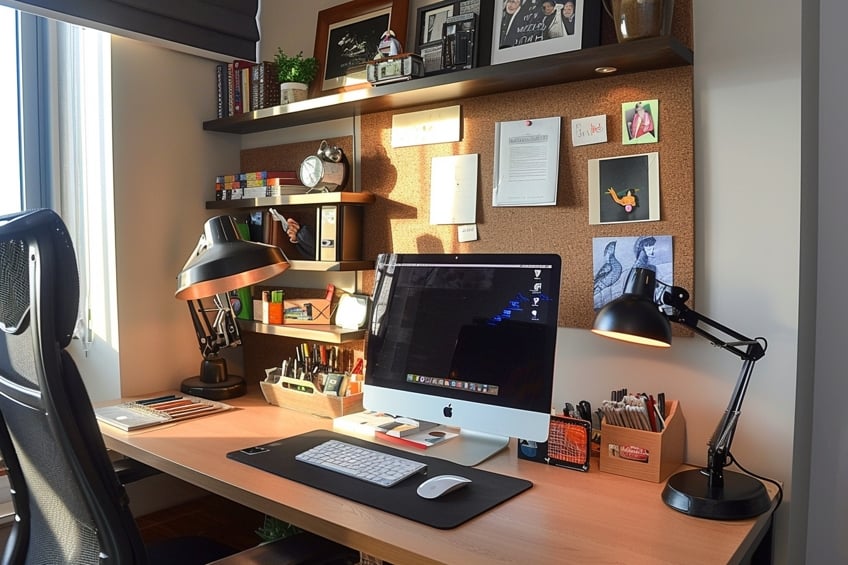How to Paint a Corkboard – Bulletin Board Beauty
This post may contain affiliate links. We may earn a small commission from purchases made through them, at no additional cost to you. You help to support resin-expert.com
Are you ready to turn your ordinary corkboard into a vibrant masterpiece? Get ready to dive into the colorful world of DIY with our guide on how to paint a corkboard! Whether you’re jazzing up your home office, adding flair to your kitchen, or creating a fun message board for your kids, painting a corkboard is a fantastic way to unleash your creativity. Grab your paints and brushes, and let’s make your corkboard the envy of all DIY enthusiasts!
Table of Contents
Key Takeaways
- Corkboards can be painted to customize workspaces or homes.
- Proper preparation and priming are crucial for paint adhesion.
- Applying paint with the correct techniques preserves the cork’s usability.
Can You Paint a Corkboard?
Painting a corkboard can be a straightforward way to bring a touch of personal flair to your workspace or home. The porous nature of cork allows it to take on paint, transforming the material into a canvas for color and creativity. Whether aiming for a bold statement or a subtle background, the process calls for specific steps to ensure the paint adheres properly and looks professional. The task begins with selecting the appropriate paints and materials to avoid damaging the cork’s texture. Acrylic paint and spray paint are the most recommended options due to their adhesion qualities and ease of application. Below are the types of paint suitable for a corkboard:
- Acrylic paint: Dries quickly and offers a vast range of colors.
- Spray paint: Provides an even coat and is convenient for larger boards.
Special attention is required in the preparation stage to clean and prime the cork, making it ready to receive paint. The painting techniques vary depending on the desired outcome, using brushes, sponges, or even spray paint for differing effects. The application must be done with care to prevent the cork from becoming saturated and losing its functionality. With the right approach, a corkboard can be both a practical tool for organization and a unique piece of decor.
Before painting, the corkboard should be cleaned to remove any dust or debris.
One should apply a primer if they desire an even and smooth finish, although it is not always necessary. Applying paint with a brush or a sponge pouncer can achieve different textures and finishes. When using a brush, long, even strokes are typically best, while a sponge pouncer is ideal for stenciled patterns. It is essential to allow the paint to dry completely before adding additional coats or using the board. This usually takes a few hours, but one should refer to the paint manufacturer’s instructions for specific drying times. In summary, corkboards can indeed be painted, and with care, they can become both functional and aesthetically pleasing elements in any room.
Materials and Tools Required
When embarking on the task of painting a corkboard, one should ensure they have all the necessary materials and tools at hand. The right choice of paint and applicators is crucial for achieving a finish that is both aesthetically pleasing and long-lasting.
Choosing the Right Paint
For painting a corkboard, the individual should consider water-based paints such as acrylic or craft paints, as they are easier to work with and quick to dry. Chalk paint can also be utilized for its matte finish and quick-drying capabilities.
It’s important to apply a latex primer or a multi-surface stain-blocking primer before the paint to seal the cork and prevent absorption, ensuring a smoother application of the paint itself.
- Primer: Latex or multi-surface stain-blocking primer
- Paint options: Water-based acrylic paint, chalk paint, or craft paint
Selecting Brushes and Other Tools
The individual requires a variety of tools for a hassle-free painting experience:
- Brushes: A selection of brushes, including a wide brush for broad strokes and a smaller one for detail work, is recommended. For those preferring an even coat, foam rollers or sponges can also be used.
- Spray paint: An alternative to brushes is spray paint, which can provide a uniform coat quickly, especially suitable for larger corkboards.
- Sandpaper: To smooth the cork surface before priming.
- Painter’s tape: To protect the frame or any area not intended to be painted.
Using these materials and tools, the person painting the corkboard can achieve a professional-looking finish that complements their space and serves its function admirably.
Preparation and Priming
Proper preparation and priming are essential steps when painting a corkboard. They ensure the best adhesion of paint and longevity of the corkboard’s new finish. DIY enthusiasts should not skip these stages as they are key to a successful corkboard painting project.
Cleaning the Corkboard
Before any painting begins, the corkboard must be thoroughly cleaned. Dust and debris must be removed to create a clean surface for the primer to adhere effectively. One can use a microfiber cloth to gently wipe the surface. It’s important to avoid using water or liquid cleaners, as these may swell or damage the cork.
Applying Primer
Once the corkboard is clean, it’s time to apply a primer. A latex primer is suitable for corkboard due to its flexibility and adherence properties. DIY painters should:
- Shake or stir the primer before application.
- Use a paintbrush or roller to apply a thin, even coat of primer on the cork surface.
- Allow the primer to dry thoroughly as per the manufacturer’s instructions before applying any paint.
The primer will seal the cork, preventing it from absorbing the paint, and will also provide a surface that allows the paint to bond better, maintaining the corkboard’s appearance and function over time.
Painting Techniques
When painting a corkboard, one must select the right materials and methods to preserve the board’s integrity, enhance its texture, and ensure a lasting finish. Using the correct techniques is crucial for creating a durable and visually appealing surface.
Using Acrylics for Versatility
Acrylic paints are a popular choice for corkboard projects due to their versatility. They adhere well to the cork surface and offer a wide range of colors to create striking visual effects. Before application, one should:
- Ensure the corkboard is clean and dry.
- Apply painter’s tape to protect the board’s frame and any areas not intended to be painted.
Creating Textures and Patterns
Textures and patterns can add depth and interest to a painted corkboard. Stencils serve as an effective tool for transferring intricate designs onto the surface. Here are the key steps for stenciling:
- Secure the stencil onto the corkboard using painter’s tape.
- Use a dabbing motion to apply paint through the stencil, which can be repeated to build up texture and contrast.
- Carefully lift the stencil after painting to reveal the design.
Applying Multiple Coats
Multiple coats of paint not only intensify the color but also contribute to an even and consistent finish on a corkboard. Coats should be applied as follows:
- Apply the first coat of paint and allow it to dry completely.
- Lightly sand the surface if necessary to maintain a smooth texture.
- Apply subsequent coats, ensuring each has dried before adding another to achieve desired opacity and durability.
Finishing Touches
After painting your corkboard, adding finishing touches can transform it from a simple bulletin board into a functional centerpiece for your home office. Here’s how to seal and protect the painted surface and accessorize to optimize your board’s utility and style.
Sealing and Protecting the Surface
Once the paint on your corkboard is dry, applying a sealant plays a crucial role in maintaining its longevity and appearance. Clear acrylic sealer or water-resistant polyurethane can be used to protect the surface. A thin layer, applied evenly with a brush or a spray, should suffice.
For white or lighter colors, ensure that the sealer does not yellow over time.
When using sealant:
- Apply in a well-ventilated area.
- Follow the manufacturer’s instructions for drying time.
- Apply at least two coats for optimal protection.
Accessorizing Your Painted Corkboard
With the painted corkboard sealed and ready for use, one can personalize it with accessories:
- Pins and thumbtacks: Select pins that complement or contrast with the color of your painted corkboard for an eye-catching effect.
- Functional decor: Attach a mix of stylish and practical items like clips or decorative frames to delineate sections of the board.
- Integration: Ensure the board fits the overall aesthetic of your home office, matching key elements like the desk or wall color.
Remember, the right accessories not only add personality but also enhance the utility of your painted corkboard.
Now that you’ve mastered the art of painting a corkboard, it’s time to let your imagination run wild! Whether you’ve transformed it into a colorful organizer, a whimsical memo board, or a personalized art piece, your painted corkboard is a reflection of your creativity and style. Don’t forget to share your masterpiece with friends and family, and inspire them to embark on their own DIY adventures. So go ahead, paint, create, and enjoy the endless possibilities of DIY magic!
Frequently Asked Questions
What Type of Paint Is Best for Covering a corkboard?
Acrylic and latex paints are typically recommended for covering a corkboard due to their versatility and ease of application. They provide a smooth finish and are available in various colors, allowing for personal customization of the cork surface.
Is It Necessary to Use Primer Before Painting on a Cork Surface?
Using a primer before painting is not usually required when painting a corkboard. Both acrylic and latex paints adhere well to cork surfaces without the need for a primer. However, if the cork is particularly absorbent or damaged, a primer may help in achieving a more even coverage.
Will Using Spray Paint on a Corkboard Provide a Durable Finish?
Spray paint can offer a durable finish on corkboards when applied properly. It is important to spray evenly and allow adequate drying time between coats. Adhering to the manufacturer’s instructions for drying time will ensure the best results for durability and appearance.


